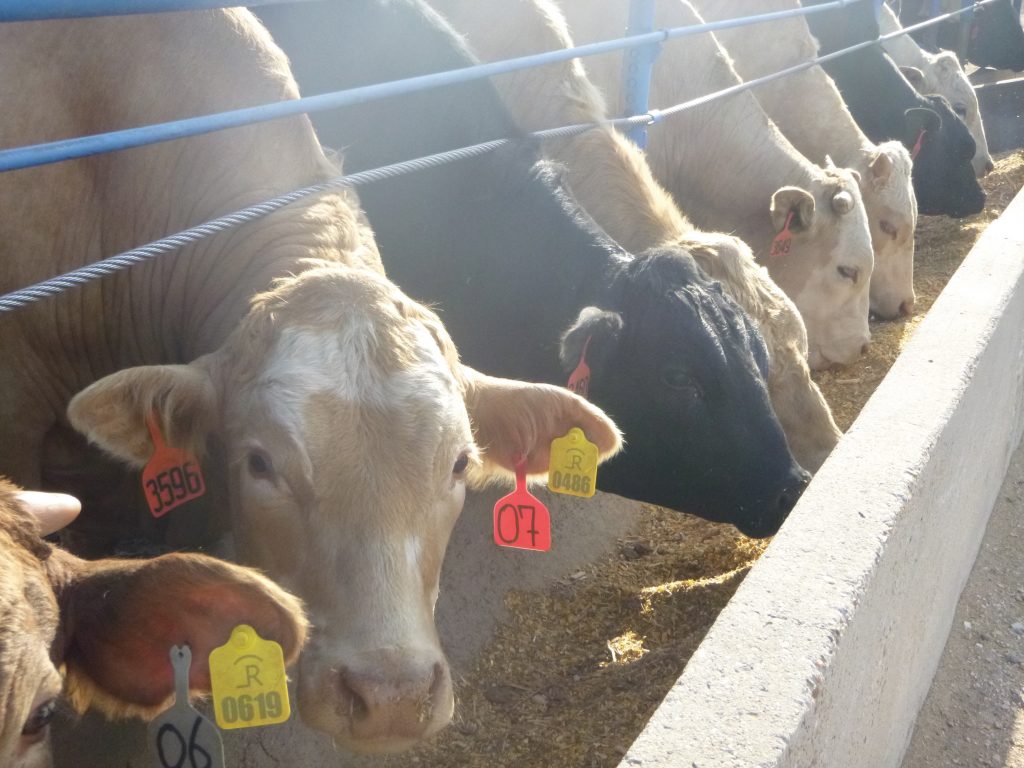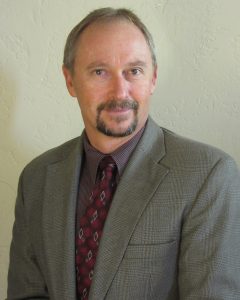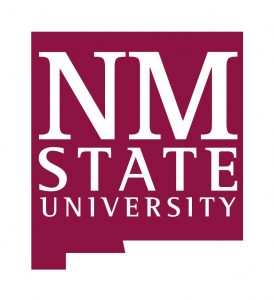Dr Clint Loest – Soil Analysis Provides Clues to Liver Abscess Conundrum
Liver abscesses can affect as many as nine out of ten cattle in feedlots in the US, with detrimental impacts on animal well-being, performance, and consequently the economic value of beef. Dr Clint Loest and his team from New Mexico State University have been studying the reasons behind varying levels of liver abscess in herds across the US, in an effort to find viable alternatives to antibiotics for controlling these abscesses in feedlot cattle.
An Increasing Problem
Diseases in US feedlot cattle are of major economic and animal welfare concern, and each year cost the US beef industry an estimated $600 million. Liver abscesses in cattle are no exception, with the most severe abscesses having the potential to reduce the value of beef carcasses by around $38 per animal. In processing facilities, liver abscesses introduce operational and food safety concerns, including a reduction in processing efficiency, lost time as a result of offline stoppages, and offal condemnation – as well as the consumer risk associated with liver abscess contamination of edible meat.
Liver abscesses affect an average of two in every ten cattle in US feeding operations, with this number rising to up to nine out of ten cattle in some feedlots. Research has previously shown that cattle fed diets high in processed grain, such as steam-flaked corn, are more likely to have liver abscesses. The theory is that rapid fermentation of high amounts of processed grains in the rumen of cattle creates acidic conditions, a situation termed acidosis, which damages the lining of the rumen. This results in ulcers, which allow bacteria to pass into the bloodstream leading to the liver, where they cause abscesses to develop.
As a result, one strategy that has been used to control the incidence of liver abscesses is to feed cattle less grain or less processed grain, and to feed more roughage – such as hay. However, this has not always eliminated the liver abscess problem, and around 77% of commercial feedlot operations also include the addition of an antibiotic in cattle feed to reduce the prevalence of bacteria that are known to cause liver abscesses.
Despite the use of antibiotics, a recent ten-year report has indicated an increase in the occurrence of liver abscesses in specific regions of the US. With growing pressure from consumers and regulatory agencies to reduce the use of antibiotic feed additives in food producing animals, Dr Clint Loest and his colleagues at New Mexico State University have been investigating viable alternatives to controlling the development of liver abscesses in feedlot cattle.
‘A promising alternative to antibiotics is a vaccine that provides immunity against the primary bacteria that causes liver abscesses,’ explains Dr Loest. ‘Researchers have also studied the use of essential oils, such as limonene, direct fed microbials and yeasts to control liver abscesses, but the results have been variable.’ His team therefore decided to focus their efforts on understanding the factors affecting the range and prevalence of liver abscesses, and the dynamics at play during their formation.

Differences in Distribution
The incidence of liver abscesses in cattle feedlots is not uniform. ‘Over the last ten years, there has been an increase in both the total and severity of liver abscesses in feedlot cattle in the High Plains region of the US including the Texas Panhandle, western Nebraska and western Kansas,’ says Zeno Bester, Dr Loest’s PhD student. ‘This increased prevalence is sporadic and has not been documented in other parts of the country.’
However, liver abscess occurrence not only varies by geographic area; research also shows differences between cattle breeds and within herds. ‘The incidence of liver abscesses is greater in male cattle than in heifers,’ says Dr Loest. ‘In addition, Holstein cattle fed for beef have more liver abscesses than beef breeds.’
Indeed, the ten-year report shows that while there was roughly a 30% increase in liver abscess prevalence in beef breeds between 2003 to 2013, in Holstein cattle, the increase was much more marked – rising from 12% to 55% over the same period.
‘It’s previously been thought that the greater amount of feed consumed by male cattle versus heifers and by Holstein cattle versus beef breeds can cause digestive upsets and greater acidity in the rumen, resulting in a greater occurrence of liver abscesses,’ says Dr Loest. ‘However, other theories could also explain these breed differences – for example, Holstein cattle exhibit different behaviours, such as frequent grooming and sorting of feed, which could result in greater exposure to organisms in their environment. They also drink more water and consequentially have wetter pens. And there’s anecdotal evidence that an organism involved with liver abscesses is a potential food-borne pathogen, possibly of soil origin.’
It was this latter theory, combined with observations that the occurrence of liver abscesses in cattle is seasonal, that led Dr Loest and his team to hypothesise that environmental factors, such as weather and animal housing conditions, could play a role in the development of abscesses.
In fact, research carried out by the team in 2016 challenges traditional thinking around the connection between acidosis in the rumen and liver abscesses. The team’s data showed that there was no association between liver abscess incidence and the level of rumen damage occurring as a result of acidosis, suggesting an alternative route of entry for liver abscess-causing pathogens. The breed of cattle (Holstein or beef breed) and the number of days on feed (DOF) were shown to be two key factors affecting liver abscess occurrence.
Significantly, the results also showed variation in liver abscess occurrence and severity within feed yards – giving credence to the theory that something within the feed yard environment could be having a significant impact on the development of liver abscesses within herds.
‘Over the last ten years, there has been an increase in both the total and severity of liver abscesses in feedlot cattle in the High Plains region of the US including the Texas Panhandle, western Nebraska and western Kansas.’

Soil Pathogens: The Missing Link
Previous research has found that indicator bacterial organisms vary across the same feedlot, within pens and across different feed yards, but soil pathogen load in feedlot pens as a predisposing factor for liver abscesses had not previously been investigated. Dr Loest and his team therefore decided to explore a possible link between the microbial load and diversity of feedlot pens and the bacterial species isolated from liver abscesses and other sections of the gastrointestinal tract.
They collected more than 6,000 rumen epithelium and abscessed liver samples from three commercial packing plants in three different regions of the US, as well as soil and manure samples from 83 different feedlot pens across 14 commercial feedlots with different cattle breeds. In addition, they recorded weather data from the closest weather stations and information about the feeding areas.
‘Our findings from this study have been significant,’ explains Dr Loest. ‘We have discovered that multiple bacterial species found in the abscesses of livers are also prevalent in the soil organic matter of animal pens. The prevalence of these bacterial species in the pens not only differs among different regions of the US, but also differs among pens of Holstein cattle and beef breeds.’
Interestingly, the data from this study demonstrate that the variation in bacterial populations in the pen soil organic matter does not necessarily affect the bacterial diversity of the liver abscesses, as the bacterial populations in the livers do not appear to differ much between regions or breeds. However, the data do show that the differences in bacteria found in the soil organic matter have an impact on whether the animals actually develop liver abscesses, as well as how serious the abscesses are.
The team’s discovery of a link between the bacteria found in cattle liver abscesses and feedlot soil samples, and the connection with the likelihood of disease occurrence, has sector-wide implications for the beef industry. ‘These findings could lead to the creation of management practices that allow prevention or at least a reduction in the prevalence of liver abscesses in cattle,’ says Dr Loest. ‘It means that industry stakeholders and feedlot managers can start to develop appropriate strategies to manage environmental and animal housing conditions.’

If successfully implemented, any such strategies could negate the need for the use of antibiotics or vaccines – providing a much more sustainable long-term solution for the management of liver abscesses, while concurrently assuaging regulator and consumer concerns. It also provides feedlots with a tool for managing risk in the event that an active component such as tylosin phosphate (the main antibiotic used to protect against liver abscesses) is prohibited from use in feedlot diets.
Dr Loest and his team’s research into investigating alternatives to antibiotics for controlling cattle liver abscesses is among a range of studies that will be at the forefront of work carried out at a new Centre of Excellence in Sustainable Food and Agricultural Systems, which is being developed at New Mexico State University. Results such as those from this study support the new Centre’s overall aim of building a sustainable, vibrant food and agricultural economy in New Mexico through value-added research and education.
Reference
https://doi.org/10.33548/SCIENTIA428
Meet the researcher

Dr Clint Loest
Department of Animal and Range Sciences
College of Agricultural, Consumer and Environmental Sciences
New Mexico State University
Las Cruces, NM
USA
Dr Clint Loest grew up on a mixed operation of ranching and farming in South Africa. He obtained his Master’s degree from the University of the Free State, Bloemfontein, before moving to Kansas State University, where he completed his PhD in Ruminant Nutrition. Dr Loest is now a Professor of Animal Science at New Mexico State University. His research focuses on optimising nutrient utilisation in ruminants by evaluating and developing feeding programs that meet animal requirements and improving digestibility, bioavailability and metabolism of nutrients through nutritional and management practices. Dr Loest is internationally known for his work investigating limiting amino acids for cattle and sheep. He is actively involved in graduate recruitment both from within the US and abroad, and has received many awards for his teaching.
CONTACT
E: cloest@nmsu.edu
W: https://aces.nmsu.edu/academics/anrs/clint-loest.html
KEY COLLABORATORS
Dr Shanna Ivey, New Mexico State University
Zeno Bester, New Mexico State University
Kathryn Smith, New Mexico State University
Dr TG Nagaraja, Kansas State University
FUNDING
Texas Cattle Feeders Association
National Institute of Food and Agriculture
FURTHER READING
Z Bester, ME Hubbert, RE Carey, KL Samuelson, CA Loest, Shifting the paradigm of liver abscess dogma in USA feedlots, Proceedings, Western Section, American Society of Animal Science, 2016, volume 67.

Creative Commons Licence
(CC BY 4.0)
This work is licensed under a Creative Commons Attribution 4.0 International License. 
What does this mean?
Share: You can copy and redistribute the material in any medium or format
Adapt: You can change, and build upon the material for any purpose, even commercially.
Credit: You must give appropriate credit, provide a link to the license, and indicate if changes were made.
More articles you may like
Grandmothers: Innovation Through Tradition
Grandmother Project – Change through Culture (GMP) is an organisation dedicated to documenting the role of grandmothers and demonstrating the effectiveness of grandmother-inclusive strategies in improving the health and well-being of women, children, and adolescents. GMP’s groundbreaking work challenges conventional wisdom to transform community-based interventions in Africa and beyond, harnessing a powerful but often overlooked resource: the wisdom and influence of grandmothers.
Dr Robert Larkin | Cultivating Change to Improve Soil Health and Increase Potato Yield
Environmental quality and food production are facing the pressing challenges of climate change and global population growth. Dr Robert Larkin from the United States Department of Agriculture-Agricultural Research Service (USDA-ARS) and a team of plant scientists developed and tested a range of crop management systems to help overcome these compounding challenges. Their work is improving soil health and increasing the yield of potato crops, contributing to the future food security of nations.
Professor Giorgio Buttazzo | Artificial Intelligence and a Crossroads for Humanity
Where do we stand with artificial intelligence? Might machines take over our jobs? Can machines become conscious? Might we be harmed by robots? What is the future of humanity? Professor Giorgio Buttazzo of Scuola Superiore Sant’Anna is an expert in artificial intelligence and neural networks. In a recent publication, he provides considered insights into some of the most pressing questions surrounding artificial intelligence and humanity.
Dr Ralf Adam | New Technologies Shaping the Future of Oral Hygiene
Understanding the efficiency of various toothbrush technologies is essential for achieving optimal oral health. Dr Ralf Adam, who leads a dedicated team at Procter & Gamble in Germany, is keen to investigate the complexities of these technologies. His team have provided new insights into the best toothbrush types for plaque removal and the maintenance of gum health. By highlighting the importance of informed oral care decisions and ongoing investigations, this vital research works towards ensuring everyone can achieve a brighter, healthier smile.




